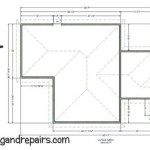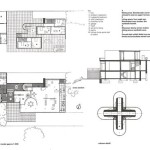Wooden House Planning Permission
Planning permission for a wooden house, much like any other type of dwelling, is a crucial step in the construction process. Navigating the regulations and requirements can seem complex, but understanding the key elements can streamline the application process and increase the likelihood of approval. This article provides a comprehensive overview of the essential considerations regarding planning permission for wooden houses.
The specific regulations governing planning permission vary depending on location. Local planning authorities (LPAs) are responsible for interpreting and enforcing national planning policy within their specific jurisdiction. Therefore, it's essential to contact the relevant LPA early in the planning process to discuss the proposed project and obtain specific guidance tailored to the local area. Pre-application advice from the LPA can prove invaluable in identifying potential issues and ensuring the application meets local requirements.
Several factors influence whether planning permission is required for a wooden house. The size and intended use of the building are significant considerations. Small, ancillary structures like garden sheds or summerhouses may fall under permitted development rights, meaning planning permission might not be necessary. However, larger structures intended for habitation, such as a primary residence or a substantial holiday home, will almost certainly require planning permission.
The location of the proposed wooden house also plays a crucial role. Building in designated areas, such as national parks, areas of outstanding natural beauty, or conservation areas, often face stricter planning regulations due to the need to protect the environment and preserve the character of the area. In these instances, demonstrating the proposed design's sensitivity to the surrounding environment and its minimal impact on the landscape is paramount.
The design of the wooden house itself is another key factor influencing planning permission. The LPA will assess the proposed design based on several criteria, including its visual impact, scale, and materials. It's crucial to demonstrate that the design is appropriate for the surrounding area and doesn't negatively impact neighboring properties. Factors like height, massing, and the use of external materials will be scrutinized.
Sustainability and energy efficiency are increasingly important considerations in the planning process. Demonstrating that the wooden house incorporates sustainable building practices and achieves high levels of energy performance can significantly strengthen a planning application. Providing details of the proposed insulation, heating systems, and renewable energy technologies can contribute to a positive outcome.
Access and parking arrangements are also crucial aspects of the planning application. The LPA will assess whether the proposed access to the property is safe and suitable and whether adequate parking provision is included in the design. The impact of the proposed development on local traffic flow and highway safety will also be considered.
Drainage and waste disposal are further elements that require careful consideration. The planning application must demonstrate how surface water and foul drainage will be managed effectively and how waste will be disposed of responsibly. Compliance with local building regulations regarding drainage and sanitation is essential.
Working with experienced professionals, such as architects and planning consultants, can significantly simplify the planning process. These professionals possess in-depth knowledge of planning regulations and can provide valuable guidance on navigating the application process. They can also assist in preparing detailed plans and supporting documentation, increasing the likelihood of a successful outcome.
Throughout the planning process, maintaining open communication with the LPA is vital. Responding promptly to any queries or requests for additional information can help avoid delays and ensure the application progresses smoothly. Engaging constructively with the LPA and addressing any concerns they raise demonstrates a commitment to complying with planning regulations.
The application process itself involves submitting a detailed planning application to the LPA, including plans, drawings, and supporting documents. The LPA will then assess the application against local and national planning policies, consulting with relevant stakeholders, such as neighbors and statutory consultees. Following this assessment, the LPA will issue a decision, either granting planning permission, refusing it, or granting it subject to conditions.
The timeframe for a planning decision can vary depending on the complexity of the application and the workload of the LPA. It's advisable to factor in sufficient time for the planning process when developing a project timeline.
Understanding the relevant planning regulations and preparing a thorough and well-supported application are crucial steps in securing planning permission for a wooden house. Early engagement with the LPA, consultation with experienced professionals, and careful consideration of design, environmental impact, and access arrangements can significantly increase the chances of a successful outcome.

Log Cabin Planning Permission In Republic Of

Planning Permission South West Log Cabins

Planning Permission South West Log Cabins

Planning Permission For Log Cabinstuin Blog

Planning Permission South West Log Cabins

Planning Permission South West Log Cabins

Do I Need Planning Permission Custom Log Cabins And Summerhouses

How To Get Planning Permission For An Off Grid Self Build Home

The Cases When Building Permits For Residential Log Cabins Are Necessary Quick Garden Co

Do I Need Planning Permission For A Log Cabin In My Garden Jack S Blog








